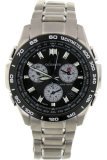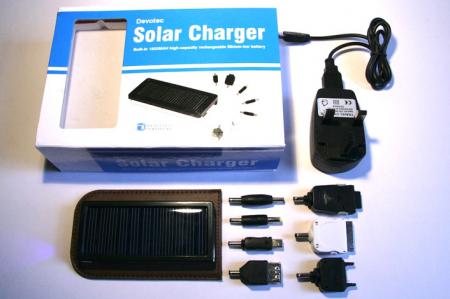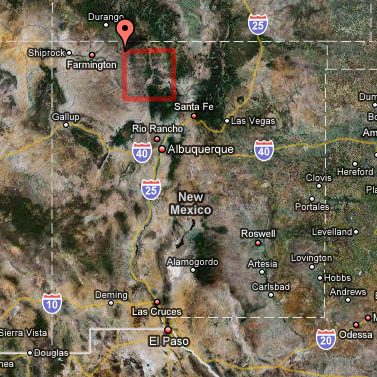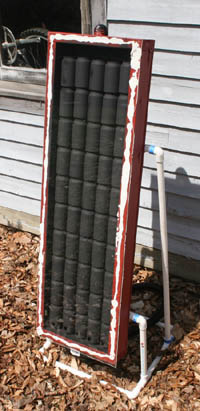
Oceanus is the high-end dress watch brand of Casio, the famous Japanese maker of digital instrument watches. Seiko and Citizen, the other two major Japanese watchmakers, long ago gave up on trying to sell digital watches to the public, leaving the market almost entirely to Casio. Oceanus is Casio’s attempt to compete seriously against Seiko and Citizen in the analog dress watch market, and to do so they knew they’d need to make watches that were both beautiful and compelling for the $500 and over price point.
Citizen has its extraordinary Eco-Drive movements that are driven by solar energy and never need a battery. Seiko has its very nifty Kinetic watches that are powered by the movement of a weighted pendulum that drives an electrical generator. Both use low power movements (often eschewing the power-sucking second hand) to make sure they have enough battery reserve to last many months without recharging.
I’m a big fan of the high-end Japanese dress watches because they have every advantage of the Swiss mechanicals with an order of magnitude better accuracy. So of course I’ve been excited about Oceanus watches since I first heard of them.
Unfortunately, there are no Oceanus retailers in my home city of San Diego. I’ve never considered buying watches online because you can’t tell from a photograph whether you’re going to like a particular watch and you won’t be able to size the bracelet yourself unless you happen to own specialty watch repair tools. But a recent road trip afforded me the opportunity to stop at an Oceanus retailer (Modern Watch Company in Glendale, CA, who were extraordinarily helpful) so I picked up a titanium Oceanus 5-motor, which is a completely analog chronometer that is nearly indistinguishable from a Swiss chronometer except by brand.
To compete in this price category (which is also populated by Swiss automatic mechanical watches) Oceanus decided to up the ante: They’d produce a dress watch equal to Seiko and Citizen in visual detail, include solar power to eliminate the battery, and produce higher accuracy than a typical Quartz movement by automatically synchronizing the time to the radio signal put out by the Fort Collins atomic clock. I’ve always wanted an atomic timekeeping watch, but every one I’d seen prior to Oceanus used a plastic case and frankly looked quite cheap despite the fact that they cost over $150. This signal can be received over most of North America, and by synchronizing to it nightly, the watch will always be exactly accurate simply by knowing which time zone it’s located in. Or, at least, that’s the theory.
It took a while to get the watch synced to the atomic clock signal. And by a while, I mean five days. Firstly, the signal is only receivable late at night. Secondly, your watch actually has to be somewhat facing the direction of Colorado and with a clear view through a window and sitting upright. Nothing else really works. Even with those conditions on my night stand, I only receive the sync signal about every third night. More than enough for accuracy, but it takes a long time just to determine if you’re ever going to get it. And in coastal areas, I was never able to receive it probably due to thermal ducting caused by the warm marine layer.
That said, the watch is still a reasonable watch, but it’s got one exceptionally incongruous problem:
The second hand isn’t a second hand.
It’s there, but it doesn’t indicate seconds. It indicates the time zone. The actual second hand is on a small dial at the 6-o’clock position. Why? Because moving a large second sweep hand takes a lot of power. The much smaller second hand below takes far less torque to move, which is important in a low-power watch mechanism run by a solar cell. To be fair, the new Citizen Eco-Drive’s do the same thing—I don’t like it in them either.
The small second hand as an additional complication is an innovation that some Swiss Chronometers have moved to in order to increase their power reserves. But those Swiss chronometers don’t also include a hand that confusingly looks exactly like a traditional second hand. So what you wind up with is a watch that appears to be stopped, unless you notice the tiny hand moving at the 6-o’clock position. Now, I know you can get used to it, but unless this was the only watch you were going to wear, I wouldn’t want to.
They use the hand to indicate the time zone (and a few other things) in the dual-time mode. It’s not a bad idea (they have to use something, after all) and I completely understand why they thought it was a good engineering trade-off, but going against the grain of a century of watch-making tradition for a nebulous feature that could have been solved another way is a really poor design decision. People expect devices to work according to standards. We don’t want to have to re-learn individual devices. We especially don’t want to have to explain to people what’s wrong with our brand new watch.
At the end of the day, I love the way the watch works, and the accuracy and ability to automatically change for daylight savings is awesome. If not for second hand issue, I’d say it’s the perfect watch.
Product Reviewed:
OCW600TDBA-7AV
Similar Products:
OCW600TDBA-1AV
OCW600TDA-2AV
OCW600TDA-7AV
OCW600TLA-1AV
OCW600TLA-7AV


 Fortunately, companies like
Fortunately, companies like  After a winter of freezing while working in the garage, Daniel Strohl was struck with the idea of creating his own solar panel garage heater. Fifty cans of Sprite later, he concocted a heater that was easily able to add 15 degrees of heat to the air. Too bad it’s summer now and he won’t need a heater for another six months.
After a winter of freezing while working in the garage, Daniel Strohl was struck with the idea of creating his own solar panel garage heater. Fifty cans of Sprite later, he concocted a heater that was easily able to add 15 degrees of heat to the air. Too bad it’s summer now and he won’t need a heater for another six months.